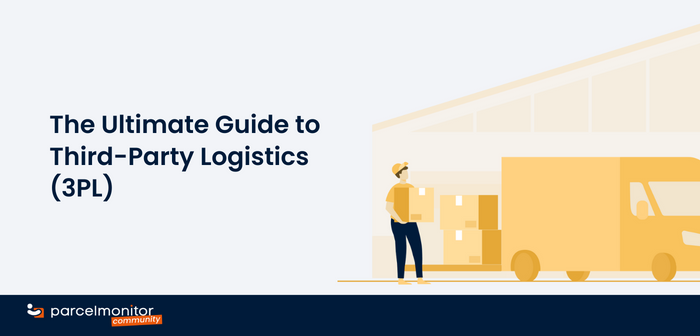Customer satisfaction is a top priority for any business. Nothing makes a consumer happier than receiving their products efficiently and quickly, which are also the core of every business operation. However, supply chain management gets more challenging and expensive as your business grows. Furthermore, logistical errors may detract from the customer experience, stunt your business’s growth and reduce profitability. Therefore, companies frequently outsource their fulfillment and logistical operations to a third-party logistics provider (3PL) to address these issues. The demand for 3PL services has surged due to rising online sales and rising customer demands for cheaper costs and quicker deliveries.
In light of this, Parcel Monitor has created an introductory guide to 3PL services, including what 3PL entails, the advantages it offers and how to effectively use it to optimize your company operations. The knowledge and strategies provided in this guide will enable you to make wise choices, cut expenses, boost productivity, and eventually acquire a competitive edge in the ultra-competitive market of today.
What is third-party logistics?
Third-party logistics, also known as 3PL, is the outsourcing of logistics, a key aspect of the operations of an e-commerce business. In this strategic alliance, the e-commerce business entrusts a specialized 3PL company with overseeing the efficient transportation of products. This partnership can encompass a broad spectrum of services, extending to both inbound and outbound logistics.
Types of 3PL services
Third-party logistics providers offer a broad range of services. These services may be divided into some key types, each of which performs a particular task for the supply chain. The most common 3PL service types are:
- Inventory management
- Value-added services
- Warehousing
- Legal compliance
- Transportation services
- Financial and information
Pros and cons of using 3PL services
The inclusion of third-party logistics in your business’s toolkit can help you run your operations more efficiently as well as save time and money. However, they also bring with them certain difficulties. Here are the advantages and disadvantages of 3PLs that you need to be aware of to decide whether you should get one for your business:
Advantage 1: Cost savings
The most significant benefit of the 3PL’s provider is the ability to reduce expenses. According to 75% of shippers, the usage of 3PL services has helped lower overall logistics costs. This is feasible because a top-notch 3PL is constantly looking for methods to increase productivity, reduce expenses and benefit their customers’ businesses. 3PLs are also skilled at using their combined order volumes and frequency to bargain for lower prices with carriers when it comes to transportation. Additionally, by protecting businesses from costly errors, they may construct a logistics network with fewer risks and greater returns.
Advantage 2: Expertise and specialization
Although businesses sometimes juggle several operational facets, 3PL firms are entirely focused on logistics management. With this specialty, they may amass a wealth of knowledge and experience, which has made them exceptionally adept at managing difficult logistical difficulties.
Advantage 3: Access to technology and resources
3PL suppliers make investments in cutting-edge logistics technology solutions. These cover a wide range of tools and systems, such as warehouse management systems (WMS), predictive analytics and automated order processing. Thanks to technology advancements, businesses may now optimize their supply chain operations in ways that would be too expensive to build internally.
Disadvantage 1: Lack of control and reliance on external providers
The level of control a company has over its logistics operations must fundamentally change as a result of using 3PL services. Businesses essentially delegate the management of these crucial tasks to an external entity, which may result in:
- Limited decision-making authority: Routing, inventory control and order fulfillment are just a few examples of daily logistical decisions that businesses may have less control over.
- Adaptation challenges: Businesses may run into difficulties when attempting to pivot or modify their supply chain strategy in quickly shifting market circumstances or during unanticipated interruptions. Delays in adapting to changing conditions may result from the requirement for collaboration with the 3PL supplier.
- Transparency concerns: Though 3PL providers strive to preserve transparency, businesses may find that their ability to see supply chain operations is restricted. It could become harder to keep track of shipments, gauge inventory levels, and ensure that quality requirements are being met.
- Dependency risks: Businesses run the risk of being exposed to a 3PL provider’s performance and dependability when they rely heavily on external suppliers for logistical tasks. The supply chain of the company may be immediately impacted by operational problems, financial challenges or leadership changes.
Disadvantage 2: Communication issues
If there are any problems with an order, each carrier must be contacted independently. Although a middleman may no longer hinder communication, 3PLs do not always ask about specific requests. That’s why communication errors may arise, which result in the following problems:
- Misunderstandings: Miscommunication or incorrect perception of needs and expectations can lead to misunderstandings that disrupt supply chain operations.
- Delays: The timely delivery of goods, order fulfillment, and overall operational effectiveness can all be hampered by delays in information exchange or decision making.
- Strategic misalignment: The business and the 3PL supplier may have different strategic priorities or customer service strategies, which can result in stress and disputes that need to be effectively resolved.
To read the full article from Parcel Monitor, click here.


